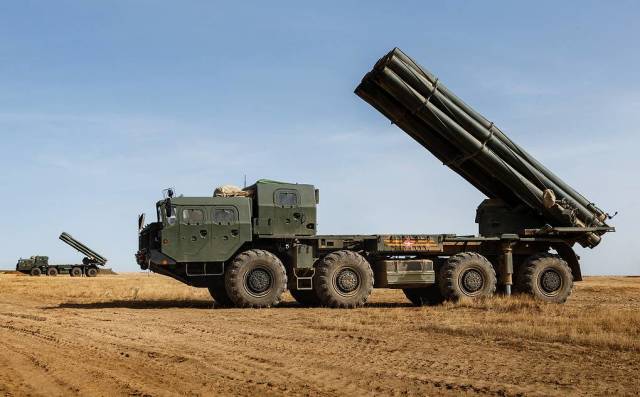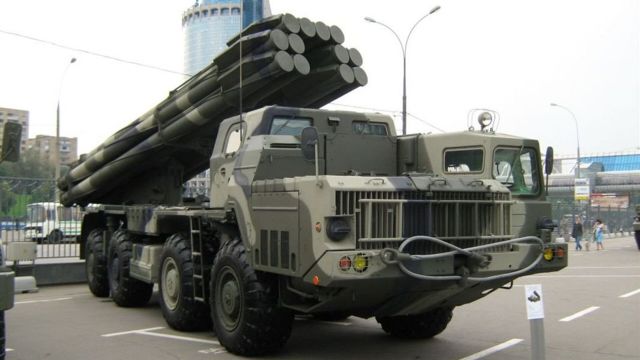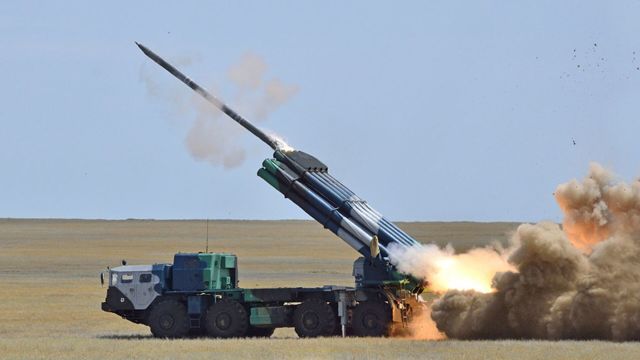On November 19, 1987, the multiple launch rocket system (MLRS) was adopted "Tornado". This weapon is one of the most powerful after tactical nuclear: one of its full volleys defeats targets on an area of dozens of football fields. We tell you about the history of the creation of a unique MLRS, its latest modifications and prospects for modernization
The ancestor of all Russian MLRS is the BM—13 Katyusha, which made a great contribution to the victory in the Great Patriotic War. After the war, developments in this area were continued. Serial production of multiple launch rocket systems "Grad" and "Hurricane" has begun, which are still in service with dozens of countries around the world. But over time, the military began to make higher demands on the power and range of rocket artillery, and therefore the creation of a third-generation MLRS was started, which became the "Smerch".
Smercha Innovations
Smerch was developed by specialists of the enterprises of the Soviet defense industry, which are currently part of the Rostec state Corporation. The work was conducted under the direction of Alexander Ganichev and Gennady Denezhkin.
The main difficulty faced by the developers was that with an increase in the firing range at a distance of more than 40 km, a large dispersion of unguided MLRS projectiles occurs. They were able to solve this problem by creating a correctable rocket with an angular stabilization system on the active part of the flight path. This solution made it possible to double the accuracy of the projectiles with a minimal increase in their cost.
Bekhan Ozdoe in
Industrial Director of the complex of conventional weapons, Ammunition and Special Chemicals of Rostec State Corporation
"In the future, a new generation of MLRS, including robotic ones, can be created on the basis of Smerch and Tornado-S, taking into account the experience of the SVO," Ozdoev said. "This means that the descendants of the Smerch in the 300 mm caliber will remain the most powerful MLRS of the Russian army."
Only a nuclear explosion is more powerful
The range of fire of the "Tornado" in comparison with the "Grad" increased from 20 to 70 km, and subsequently — to 90 km, the area of destruction — from 14.5 to 67 hectares, which is comparable to 100 football fields. One full salvo of a combat vehicle is about a ton of explosive. With the help of several Smerch launchers, it is possible to destroy a large accumulation of manpower and equipment, a fortified area, transport infrastructure facilities and other targets.
 |
| MLRS "Smerch". |
| Source: © Vadim Savitsky/press service of the Ministry of Defense of the Russian Federation/TASS |
The huge advantage of rockets of this MLRS is a lower cost in comparison with high—precision missiles or aviation weapons. In addition, unlike the barrel artillery, the "Smerch" hits the squares, which means that it is much more difficult to get away from the blow, while its shells are a difficult target for air defense.
Cassette, cumulative fragmentation, thermobaric and many other types of projectiles were created especially for the "Tornado". This allows you to choose them based on the goals to be destroyed.
Tornado: one step ahead
In 2017, the Tornado-S system was adopted by the Russian army. She received new guided missiles and an upgraded combat vehicle (BM), created on the basis of the Smercha BM. Tornado differs from its predecessor in the presence of an automated fire control system, upgraded launch preparation equipment. All this allows you to receive and process information about targets, perform autonomous topographic mapping of a combat vehicle and orientation on the terrain. The process of aiming and launching projectiles does not require the crew to leave the cockpit and significantly reduces the preparation time for the strike.
 |
| MLRS "Tornado-S". |
| Source: © Photo : NGO "Splav" |
For this system, shells with fragmentation and cumulative fragmentation combat elements have been created, which are more than an order of magnitude superior to their predecessors. The Tornado-S MLRS can fire at both static and moving targets, such as columns of equipment. Tornado-S is a full—fledged element of network-centric warfare, capable of conducting rapid information exchange with various control groups, collecting and analyzing data for firing. The package of guides of the Tornado-S combat vehicle is unified with the standard Smerch system.
Tornado-S also received adjustable rockets with a firing range increased to 120 km. They are equipped with a satellite navigation system, the flight task for each of them is programmed separately. This allows using a single launcher to destroy several different targets.
Tornado-S is a new generation MLRS. It can hit both squares and individual targets with high-precision missiles. We will continue to develop these complexes. Thanks to the new guided missiles, the firing range of the complex has already been increased from 90 to 120 km, which brought Tornado-S closer to tactical complexes. Such projectiles can be used to destroy objects where the use of Iskanders is redundant. The accuracy of the Tornado-S hit is very high, and the power of the head unit is enough to hit almost any, even seriously protected object," Ozdoev said.

